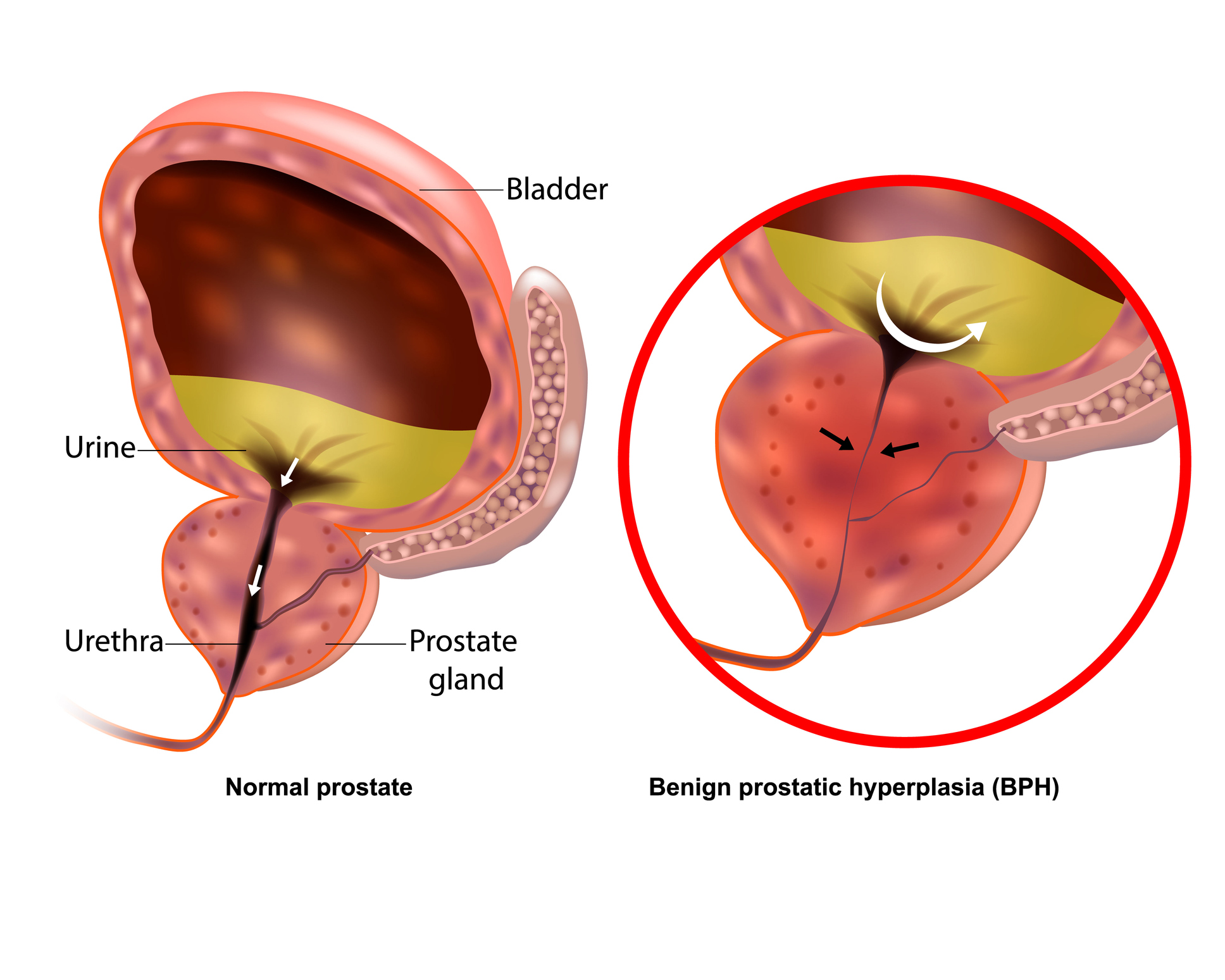Holmium laser enucleation of the prostate (HoLEP) is a minimally invasive treatment for patients diagnosed with benign prostatic hyperplasia (BPH). HoLEP is also called holmium laser prostate surgery.
During the procedure, the physician uses the holmium laser to remove tissue that is blocking urine flow through the prostate. The surgeon will use another instrument to break up the large prostate tissue into smaller fragments to make it easier to remove.
Though HoLEP is similar to open prostate surgery, the procedure doesn’t require any incisions to remove the entire portion of the prostate blocking urine flow. Patients with enlarged prostate glands who need surgical treatment may experience relief after HoLEP.
After HoLEP, the removed tissue is sent to pathology for examination in the laboratory that includes screening for other conditions, such as prostate cancer.

The Benefits of HoLEP
Unlike traditional prostate surgery, HoLEP has a faster recovery process and patients will experience symptom relief sooner. Because the procedure involves removing the maximum volume of tissue, patients who undergo a HoLEP procedure are significantly less likely to need a second procedure to treat urinary symptoms.
HoLEP is the only size-independent endoscopic option for the surgical treatment of patients with BPH. Compared to TURP or open prostatectomy, HoLEP may provide:
- A shorter hospital stay
- Shorter catheter times
- Long term durability
- Better clinical outcomes
The HoLEP Procedure
Patients are placed under general anesthesia and the surgeon will begin by passing an endoscope through the urethra into the prostate, without making any cuts on the skin.
The surgeon then uses the Holmium laser to completely remove the obstructive core of the prostate and provide maximal relief of prostate obstruction. The patient will typically only require one HoLEP procedure in his lifetime. It is highly unlikely that the prostate will regrow after the procedure. Fewer than one percent of patients need a second procedure up to 10 years after undergoing HoLEP, compared to 10-15% of patients after TURP. Green light laser surgery has an even higher rate of repeat treatment.
After HoLEP, the removed portion of the prostate will be sent to a lab for microscopic analysis. In eight percent of cases, prostate cancer that would otherwise go undetected is found. HoLEP is one of the most extensively researched procedures for treatment of BPH.


The Advantages of HoLEP
HoLEP has become the gold standard for BPH treatment. Advantages of HoLEP include:
- Shorter time with a catheter in place after surgery
- Fewer blood transfusions
- Less bleeding
- Shorter hospital stay (90% of men who undergo HoLEP are able to leave the hospital without a catheter the day after surgery; in some cases, patients are able to go home the day of surgery)
Research suggests that HoLEP improves the rate of urinary flow and relieves urinary symptoms more effectively than any other endoscopic treatment for BPH. After HoLEP, the average symptom score improvement is 70-80%.
Patients diagnosed with BPH have also experienced flow rate improvements of up to 600% after treatment with HoLEP.
HoLEP has also been proven extremely effective in the treatment of urinary retention in men. 98% of men using catheters before surgery no longer had to use catheters after HoLEP. This is compared to 70% of men who underwent green light laser surgery and TURP. Unlike other endoscopic treatments for BPH, HoLEP is an effective procedure for men with any size prostate.

